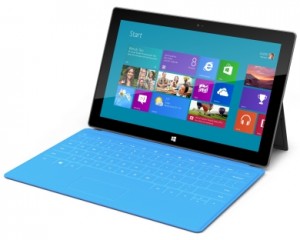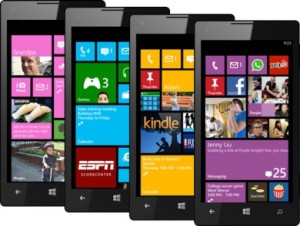 I’ve written for years about Microsoft technology, and the tech landscape is pretty exciting these days, with the company’s introduction of a couple of new operating systems (Windows 8 and Windows RT) as well as an all-new tablet computer called the Surface. This is Microsoft’s first real foray into the tablet market, competing with the trend-setting Apple iPad. Yes, Microsoft has supported tablet computing for years through third-party hardware manufacturers, but the Surface is the first touch-enabled tablet straight from Microsoft. And it’s a beauty.
I’ve written for years about Microsoft technology, and the tech landscape is pretty exciting these days, with the company’s introduction of a couple of new operating systems (Windows 8 and Windows RT) as well as an all-new tablet computer called the Surface. This is Microsoft’s first real foray into the tablet market, competing with the trend-setting Apple iPad. Yes, Microsoft has supported tablet computing for years through third-party hardware manufacturers, but the Surface is the first touch-enabled tablet straight from Microsoft. And it’s a beauty.
Naturally, last month’s launch event didn’t get the same kind of coverage that lovable Apple gets for its consumer devices, but in my opinion, it should have. The Surface—and, by extension, Microsoft’s entire new Windows 8 ecosystem—is big news, especially for those of us interested in more powerful productivity devices.
 I’ve resisted the iPad since its debut, simply because it always seemed like an expensive toy to me. Essentially a giant version of the iPod touch that I already have for my music and other entertainment, the iPad admittedly offered the larger real estate for enjoying media such as videos and ebooks (not to mention web surfing), but I just couldn’t justify the price for a consumption device that didn’t offer me a compelling experience that I couldn’t get on my existing devices and systems. Sure, the iPad offered fun mobility and convenience, but I needed more from it. I guess when I get right down to it, I wanted to be able to work on it, to get stuff done. And in my line of work, that means I wanted to be able to write on it.
I’ve resisted the iPad since its debut, simply because it always seemed like an expensive toy to me. Essentially a giant version of the iPod touch that I already have for my music and other entertainment, the iPad admittedly offered the larger real estate for enjoying media such as videos and ebooks (not to mention web surfing), but I just couldn’t justify the price for a consumption device that didn’t offer me a compelling experience that I couldn’t get on my existing devices and systems. Sure, the iPad offered fun mobility and convenience, but I needed more from it. I guess when I get right down to it, I wanted to be able to work on it, to get stuff done. And in my line of work, that means I wanted to be able to write on it.
On the sleek and glossy iPad, that meant using a digital touch keyboard that’s not exactly ideal for long-form writing.
So when it was revealed that Microsoft would be producing a Windows 8 tablet computer that would bring to the tablet market a full “laptop computing” experience, my interest was piqued. Reading the specs, I saw that the Surface would feature a cover that doubled as a physical keyboard—and I knew that would make all the difference.
(Read the rest at Residential AV Presents: Connected Home.)





